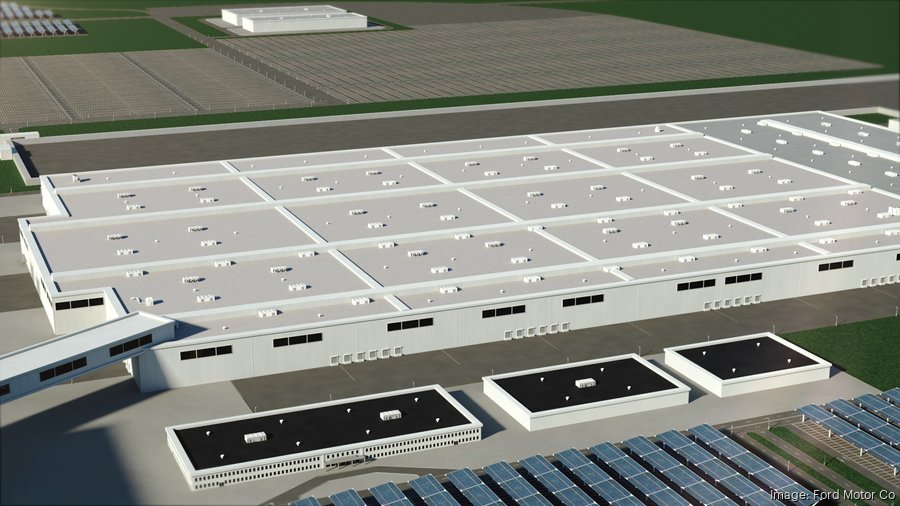Ford Motor Co. provided an update on the company’s electric vehicle (EV) plan in a conference call with media and investors on Thursday, July 21.
The update contained three major facets: a new battery for Ford EVs; the supply of raw materials and batteries; and the demand for EVs.
New battery
Ford's EV batteries have mostly relied on nickel cobalt manganese (NCM) chemistry. Blue Oval City is set to produce NCM batteries. However, NCM batteries rely on scarce materials like nickel. Several EV manufacturers, including Tesla, have switched some models to lithium iron phosphate (LFP) batteries. Ford plans to now do the same for some vehicles.
The arguments for LFP versus NCM are relatively simple. LFP batteries are cheaper and rely on easier to find materials. This can bring the price of a vehicle down. Ford estimates that adopting LFP on some models is projected to bring a 10% to 15% saving on materials.
LFP batteries also have longer cycle lives, meaning they can be charged to full and emptied more often than an NCM battery.
On the other hand, NCM batteries have longer charges and more power, meaning less time between charges and the ability to have more power. NCM batteries also charge faster. The differences in lifespan and potential miles are somewhat negligible.
Ford said that the LFP batteries would come next year to the Mustang Mach-Es sold in North America and in F150 Lightnings in early 2024 in order to increase capacity of those vehicles.
Material supplies
Ford has big plans for EVs, hoping to hit 600,000 vehicles by late 2023 and 2 million by 2026 — one year after the completion of Blue Oval City — across all its EV production sites.
Ford announced July 21 that it has secured 100% of the battery capacity needed — 60 gigawatt hours (GWh) — to meet the 600,000 production run rate.
It reached this capacity by working with SK On, which is the second half of the Blue Oval City joint venture, as well as with LG Energy Solution. Both companies are increasing their NCM battery production to help meet demand.
Ford is also planning on building a North American cathode production facility with EcoPro BM and SK On.
“Battery raw material is in critical supply for the entire EV industry,” said Lisa Drake, VP of EV industrialization at Ford Model e [Ford’s electric division], on the conference call. “Ford is taking an important first step to secure raw materials directly from mining companies, and we are building a new EV supply chain that is geographically diverse.”
Ford said that it is also direct sourcing both its lithium and its nickel to help keep costs down and supplies flowing. Ford has reached deals to secure lithium from both Australia and Argentina.
Overall, Ford announced that it has secured 70% of the materials and batteries needed to support its 2 million EVs by 2026 goal.
EV demand bringing new customers, high growth
Ford is also staring down faster-than-expected EV demand growth and is betting big on electric vehicles.
“The company expects compound annual growth rate for EVs to top 90% through 2026 — more than double forecasted global industry EV growth,” the company said in a press release.
Bloomberg reported on July 20 that Ford was potentially cutting 8,000 jobs to help fund EV investment. The cuts are expected to mostly be in Ford’s salaried workforce, as well as the Ford Blue division of the company, which handles internal combustion engines.
Ford did not directly address that report on the conference call.
Ford executives did, however, say on the call that Ford is cutting some layers of bureaucracy, where most of the cuts have been reported to be.
“I've worked on a lot of big teams, I've worked on some small teams too. But this [EV] team was fast,” Drake said. “It's because we cut out a lot of bureaucracy. I will tell you most of those deals that you saw, we did not have a lot of meetings about them. There were probably four to five key decision-makers who needed to align, and we did it in days, not months.”
Ford is also seeing EVs bring in new customers. The company said 50% of buyers of the Ford F150 Lightning were new to the Ford brand and 70% of Mustang Mach-E buyers were new to the brand. The company also said that 60% of fleet managers polled by Ford said they planned to add EVs to their fleets in the next two years.
Ford also cited a study from Ernst & Young (EY) Global Limited that noted 52% of global car buyers want to buy an EV or hybrid, an 11% increase from a year ago and 22% increase from 2020.
That study found that European and Asian markets were leading the way, but only 29% of U.S. consumers were planning on getting an EV, the least EV-committed market in the world.
However, Ford believes in rapid growth of demand for EVs, projecting EVs making up a third of all new car sales by 2030.
Ford said that all of this is happening as the company is seeing growing interest in its electric products. The F150 Lightning has a reservation list that will take the company into 2024 for production. Blue Oval City is set to be the manufacturing site of "next-generation" F-Series EVs.
Local full-time employees
| Rank | Prior Rank | Rank / Prior rank / URL |
|---|---|---|
1 | 1 | Smith & Nephew Inc. |
2 | 2 | Carrier Global Corp. |
3 | 3 | ABB Electrification Products |
